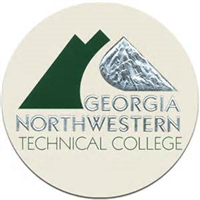What do they do?
Operate machinery to install roof support bolts in underground mine.
Also known as:
Bolt Machine Operator, Bolt Man, Bolter, Miner, Place Change Roof Bolter, Roof Bolter, Roof Bolter Operator, Underground Miner, Underground Roof Bolter
-
-27.8%
Change
Select a state to see its job growth rate ranking100Job Openings
Select a state to see its net job growth ranking
Looking for colleges that offer a specific major? Use the College Match Tool to find your best-matched schools and discover your estimated Net Price!
- High school diploma equivalent (52%)
- Some college, no degree (24%)
- Less than high school diploma (11%)
- Associate's degree (7%)
- Bachelor's degree (6%)
- Master's degree (1%)
- Doctorate or Professional Degree (<1%)
People in this career often know a lot about:
- Production and Processing - Knowledge of raw materials, production processes, quality control, costs, and other techniques for maximizing the effective manufacture and distribution of goods.
- Education and Training - Knowledge of principles and methods for curriculum and training design, teaching and instruction for individuals and groups, and the measurement of training effects.
- Mechanical - Knowledge of machines and tools, including their designs, uses, repair, and maintenance.
- Public Safety and Security - Knowledge of relevant equipment, policies, procedures, and strategies to promote effective local, state, or national security operations for the protection of people, data, property, and institutions.
People in this career often have talent in:
- Control Precision - The ability to quickly and repeatedly adjust the controls of a machine or a vehicle to exact positions.
- Arm-Hand Steadiness - The ability to keep your hand and arm steady while moving your arm or while holding your arm and hand in one position.
- Manual Dexterity - The ability to quickly move your hand, your hand together with your arm, or your two hands to grasp, manipulate, or assemble objects.
- Extent Flexibility - The ability to bend, stretch, twist, or reach with your body, arms, and/or legs.
- Problem Sensitivity - The ability to tell when something is wrong or is likely to go wrong. It does not involve solving the problem, only recognizing that there is a problem.
- Multilimb Coordination - The ability to coordinate two or more limbs (for example, two arms, two legs, or one leg and one arm) while sitting, standing, or lying down. It does not involve performing the activities while the whole body is in motion.
- Reaction Time - The ability to quickly respond (with the hand, finger, or foot) to a signal (sound, light, picture) when it appears.
- Near Vision - The ability to see details at close range (within a few feet of the observer).
- Depth Perception - The ability to judge which of several objects is closer or farther away from you, or to judge the distance between you and an object.
- Information Ordering - The ability to arrange things or actions in a certain order or pattern according to a specific rule or set of rules (e.g., patterns of numbers, letters, words, pictures, mathematical operations).
- Static Strength - The ability to exert maximum muscle force to lift, push, pull, or carry objects.
- Selective Attention - The ability to concentrate on a task over a period of time without being distracted.
- Response Orientation - The ability to choose quickly between two or more movements in response to two or more different signals (lights, sounds, pictures). It includes the speed with which the correct response is started with the hand, foot, or other body part.
People in this career often do these activities:
- Drill holes in earth or rock.
- Break up rock, asphalt, or concrete.
- Position construction or extraction equipment.
- Install equipment attachments or components.
- Inspect equipment or tools to be used in construction or excavation.
- Test air quality at work sites.
- Install safety or support equipment.
- Operate mining equipment.
- Install metal structural components.
- Inspect completed work to ensure proper installation.
- Position safety or support equipment.
- Assemble temporary equipment or structures.
This page includes data from:

 Occupation statistics: USDOL U.S. Bureau of Labor Statistics Occupational Employment Statistics
Occupation statistics: USDOL U.S. Bureau of Labor Statistics Occupational Employment Statistics













